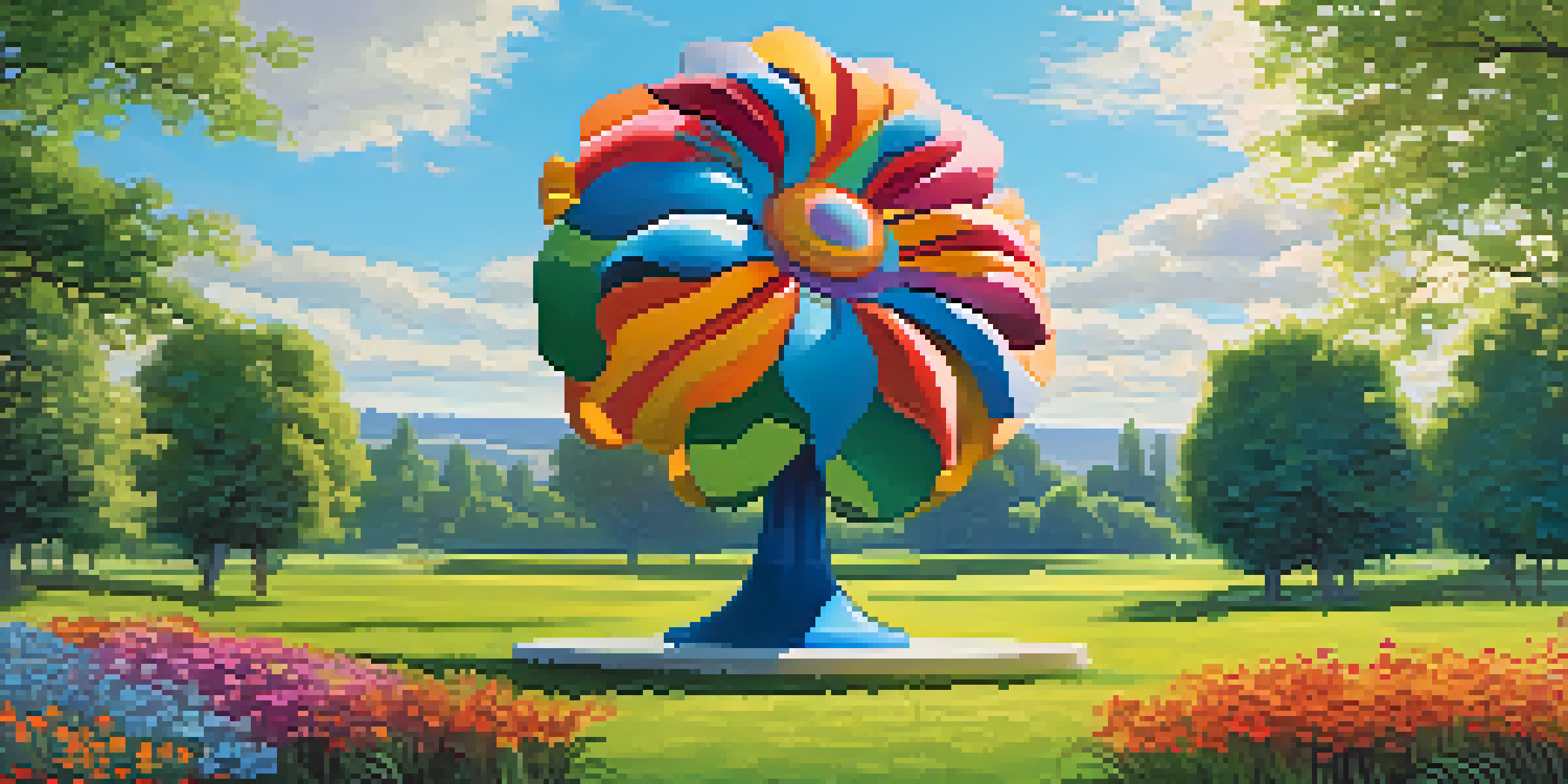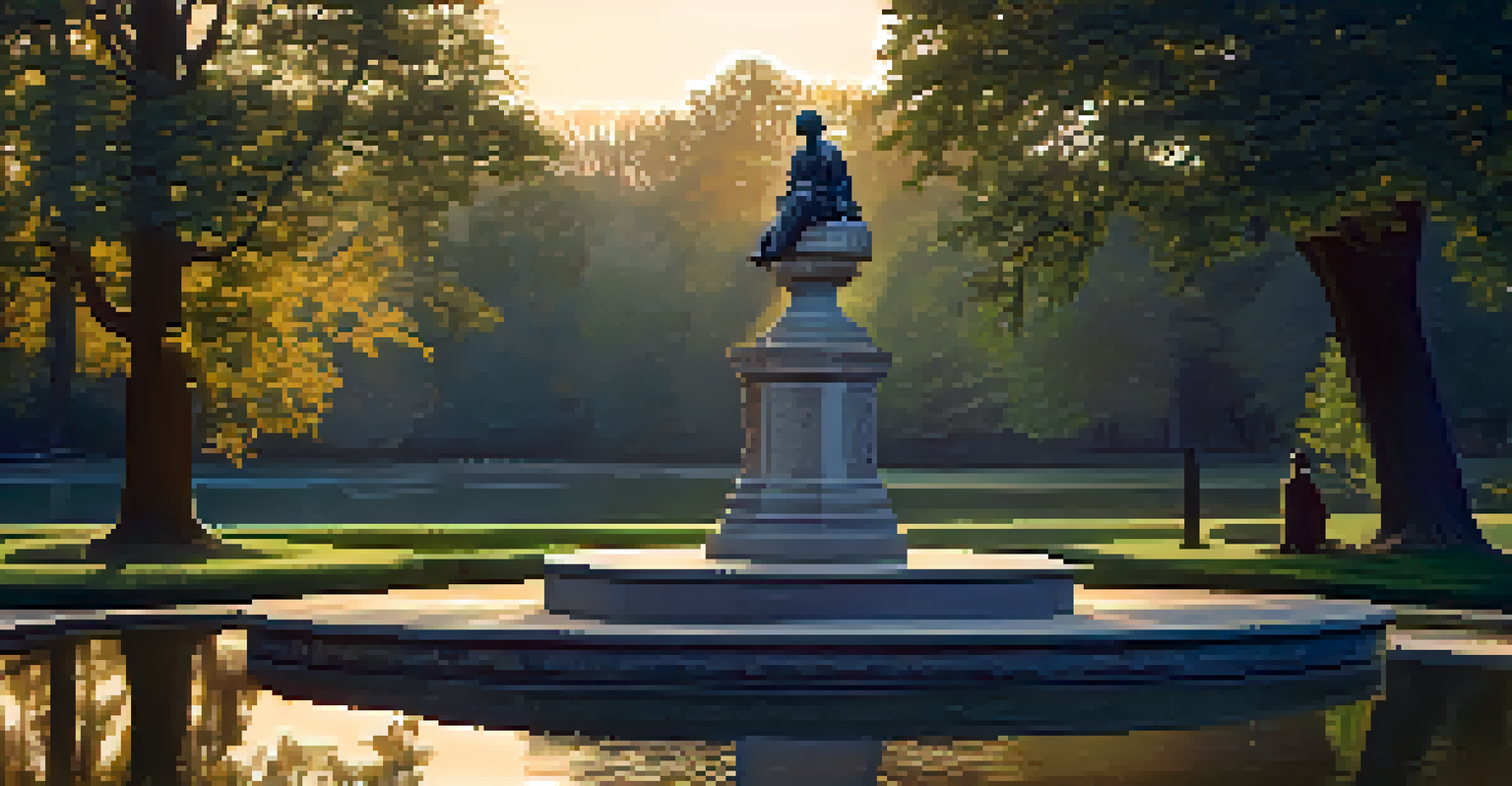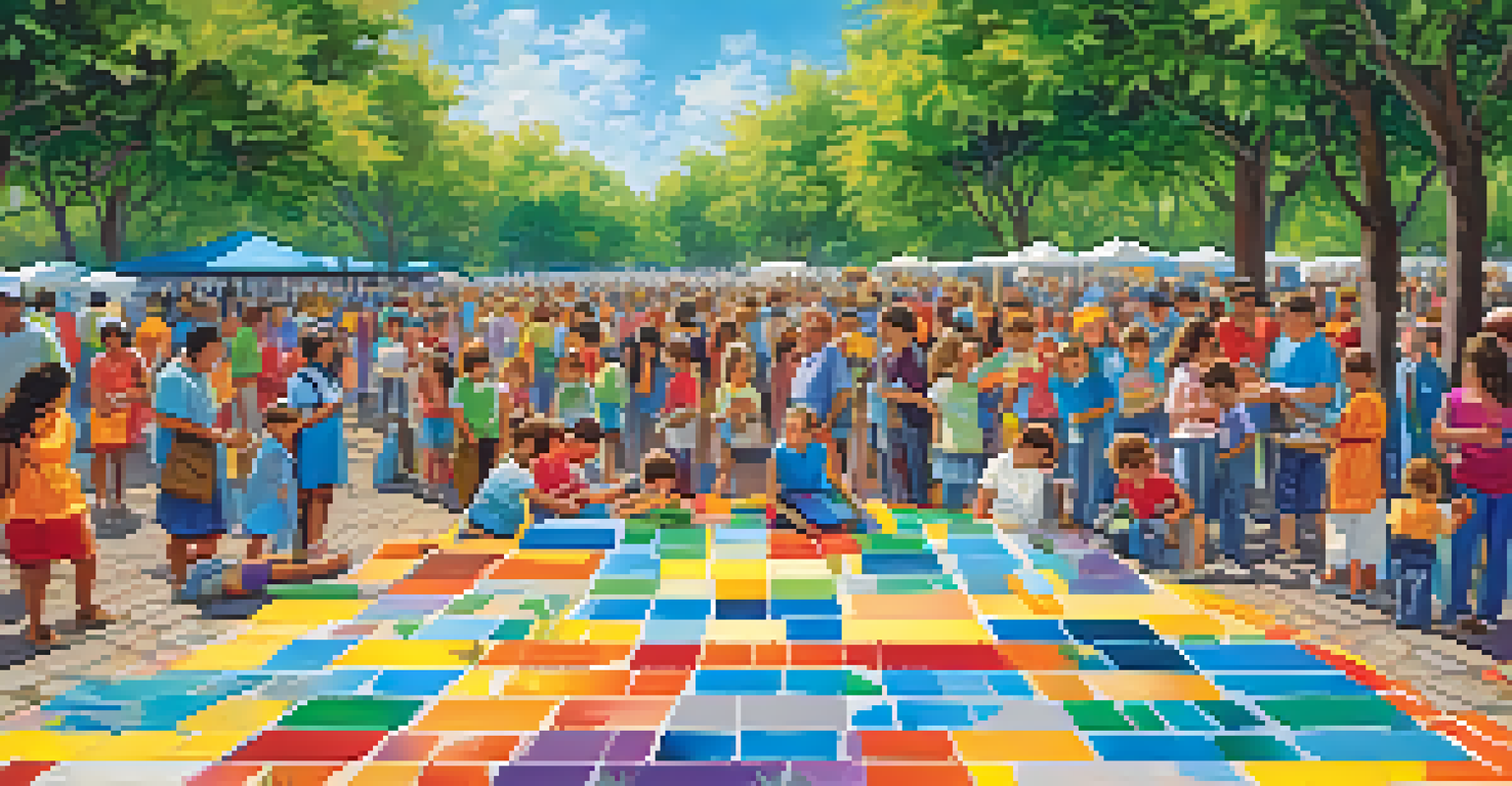Sculptures in the Park: Engaging Communities with Art

What Are Sculptures in the Park?
Sculptures in the park refer to artistic installations placed in outdoor spaces, enhancing the natural environment. These pieces vary from large-scale installations to smaller, intimate sculptures, each contributing uniquely to the park's atmosphere. By blending art with nature, sculptures create a visual dialogue that invites contemplation and appreciation.
Art is not what you see, but what you make others see.
Imagine walking through a park and encountering a striking sculpture that prompts you to pause and reflect. These moments can be transformative, igniting curiosity and sparking conversations among visitors. Just as a good book can transport you to another world, a sculpture can evoke emotions and memories, making the park experience richer.
Moreover, sculptures often celebrate local culture or history, creating a sense of identity and pride within the community. They serve as landmarks that can draw visitors, encouraging them to explore the park and engage with its surroundings.
The Role of Art in Community Engagement
Art has the power to bring people together, and sculptures in parks are a prime example of this unifying force. They provide a common ground for individuals from diverse backgrounds, fostering a sense of belonging and shared experience. When people gather to appreciate art, discussions naturally arise, strengthening community bonds.

For instance, a local sculpture might reflect the town's history, prompting residents to share personal stories linked to that history. These interactions not only enhance the appreciation of the artwork but also deepen connections among community members, creating a network of shared narratives.
Art Transforms Public Spaces
Sculptures enrich parks, turning them into vibrant cultural hubs that invite exploration and enhance community engagement.
Additionally, sculptures can be a focal point for community events, such as art walks or festivals, which further encourage engagement. These gatherings not only celebrate art but also foster local pride and encourage collaboration among artists, businesses, and residents.
Enhancing Public Spaces with Art
Sculptures in parks can transform otherwise ordinary public spaces into vibrant cultural hubs. They introduce color, movement, and texture, which enrich the visual landscape and invite exploration. This transformation can make parks more appealing, encouraging greater public usage and enjoyment.
Public art is a way to engage the public in a dialogue about their community.
Consider a park that features a whimsical sculpture, perhaps shaped like an oversized flower. Such a piece not only adds beauty but also becomes a playful element that children and adults alike are drawn to. This kind of interaction with art encourages imaginative play and engagement with the environment.
Moreover, well-placed sculptures can guide the flow of foot traffic, subtly directing visitors to different areas of the park. This thoughtful integration can enhance the overall experience, encouraging people to discover hidden corners and appreciate the park's full offerings.
Sculptures as Educational Tools
Sculptures can serve as powerful educational tools, offering insights into art, culture, and history. By placing sculptures in public parks, communities create opportunities for informal learning experiences. Visitors can engage with the artworks and learn about their significance, techniques used, and the artists' intentions.
For example, a sculpture representing a local historical figure can spark curiosity about that person's life and contributions. This can lead to discussions in schools, community centers, or even families, encouraging an exploration of local heritage and fostering a deeper understanding of one’s community.
Sculptures Foster Community Bonds
By encouraging public interaction and collaboration in their creation, sculptures strengthen connections among community members.
Additionally, many parks offer guided tours or educational programs focusing on the sculptures. These initiatives can help visitors of all ages appreciate the artistic process and the stories behind each piece, making art accessible and relatable.
Fostering Creativity through Community Involvement
Engaging the community in the creation of sculptures can foster a sense of ownership and pride in public spaces. Many successful projects involve local artists and residents in the design and construction process, ensuring that the artworks resonate with the community’s values and identity. This collaborative effort not only enhances creativity but also strengthens community ties.
Imagine a park where the community comes together to create a mosaic sculpture that reflects their shared vision. Such projects can bring together diverse skill sets, from pottery to painting, showcasing local talent and creativity. The resulting artwork becomes a symbol of unity and collaboration.
Moreover, involving community members in the artistic process encourages dialogue about art and its impact on public spaces. It empowers residents to express themselves and contribute to the cultural fabric of their community.
The Economic Impact of Sculptures in Parks
While the aesthetic and social benefits of sculptures are clear, they also have significant economic implications. Parks that feature engaging sculptures can attract tourists and visitors, boosting local businesses and enhancing the community’s economy. This influx of traffic can lead to increased sales for nearby shops, restaurants, and services.
For instance, a park known for its impressive sculpture collection might draw art enthusiasts from neighboring towns, encouraging them to spend a day exploring the area. This not only helps local businesses thrive but also raises the profile of the community as a cultural destination.
Economic Benefits of Art Installations
Engaging sculptures can attract visitors, boosting local businesses and enhancing the economy while supporting local artists.
Furthermore, the economic benefits extend to the artists themselves, who gain exposure and opportunities for future projects. By supporting local artists, communities create a sustainable cycle that fosters both artistic expression and economic vitality.
Conclusion: Sculptures as Community Catalysts
Sculptures in parks are much more than decorative elements; they are catalysts for community engagement and social interaction. By integrating art into public spaces, communities can enhance the quality of life for residents and create vibrant, welcoming environments. The benefits of these sculptures extend beyond aesthetics, fostering connections, education, and economic growth.
As we reflect on the importance of art in our public spaces, it’s clear that sculptures play a vital role in shaping community identity. They encourage us to pause, reflect, and engage with one another, creating opportunities for shared experiences and collective joy.

Ultimately, sculptures in parks remind us of the power of art to connect us, inspire us, and bring communities together. Embracing these artistic installations can lead to a richer, more vibrant public life for everyone.